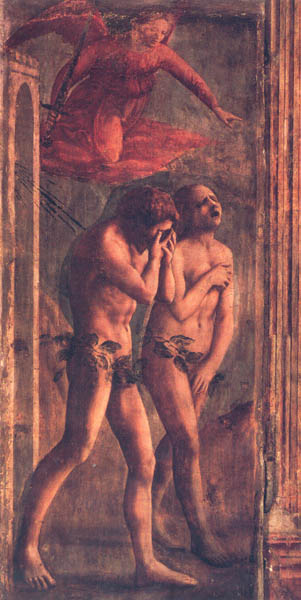Image Details

Brancacci Chapel, St. Maria Del Carmine, Florence
Grief-stricken exiles watched closely by an angel fill Masaccio’s fresco of the “Expulsion from Eden.” We have no glimpse into a shining Eden, as we do in Thomas Cole’s painting (see photo of painting by Thomas Cole), nor do we see much of the terrain of this world. Instead Masaccio tells us of the wages of sin through Eve’s tormented expression as she covers her private parts, and through the stride of the bowed Adam as he moves sightlessly at her side.
The fresco, in St. Maria del Carmine’s Brancacci Chapel in Florence, suffered some indignities after Masaccio died; another hand painted the crude vines encircling the couple’s hips.
Masaccio (1401–1428) was the first of the great masters in 15th-century Florence. In his short 27-year life, he developed a new style, characterized by realism, sobriety of gesture, narrative power and a command of light and shade. The solidity of form and convincing spatial relationships in Masaccio’s frescoes became a model for later Florentine painters.
